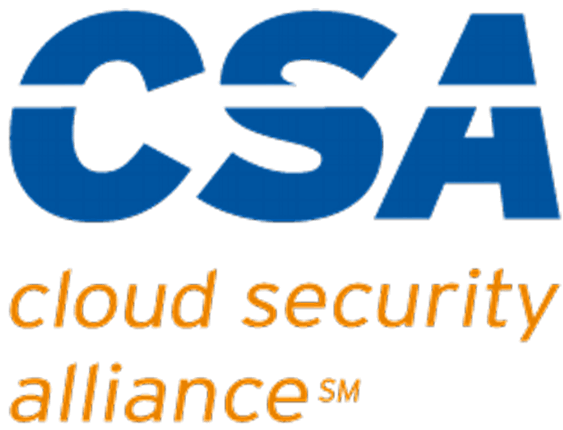The debate between cloud and on-premise infrastructure has intensified as technology options for small businesses expand. Both models offer distinct advantages and drawbacks depending on your organization’s size, industry, growth trajectory, and operational needs. Rather than a one-size-fits-all answer, the right solution often lies in understanding your priorities: cost control, flexibility, security, and operational control.

This article will explore the pros and cons of cloud and on-premise solutions, offer practical examples, and discuss how hybrid strategies can provide the best of both worlds for many small businesses.
Understanding the Basics
Cloud Infrastructure: Cloud computing delivers IT services (servers, storage, databases, networking, software, analytics) over the internet. You pay for usage, typically through a subscription model.
On-Premise Infrastructure: On-premise solutions involve physically hosting servers, storage, and networking equipment at your business location or a private data center. You own and maintain the hardware and software.
The key difference is responsibility: with cloud, the service provider handles many infrastructure tasks; with on-premise, your business bears the burden of maintaining and securing the environment.
Cloud Advantages
- Lower Upfront Costs
- Cloud services eliminate the need for significant capital investments in hardware and software. You pay as you go, aligning costs with actual usage.
- Scalability
- Easily scale up or down based on your business needs. This flexibility is ideal for seasonal businesses or those with unpredictable growth patterns.
- Remote Accessibility
- Employees can readily access applications and data from anywhere with an internet connection, making cloud ideal for remote or hybrid workforces.
- Maintenance Outsourced
- Cloud providers handle system maintenance, updates, and backups, freeing up internal resources.
- Disaster Recovery and Redundancy
- Many cloud services offer built-in redundancy and disaster recovery options, enhancing business continuity.
Cloud Disadvantages
- Ongoing Costs
- While upfront costs are low, subscription fees can add up over time, especially for businesses that consume significant storage or compute resources. Additionally, most cloud providers meter certain aspects of usage, such as Internet traffic or IOPS, which can lead to substantial billings. Datacate is a significant exception to this rule, offering flat-rate pricing on our cloud services.
- Limited Control
- You are dependent on the vendor for uptime, updates, and sometimes customization options.
- Security Concerns
- While reputable providers offer strong security, sensitive data stored offsite could pose compliance or regulatory concerns in industries like healthcare or finance.
- Vendor Lock-In
- Migration between cloud providers can be costly and complicated.
Additionally, while cloud services boast impressive uptimes, businesses still need reliable internet connections to access their data. Downtime caused by connectivity issues can stall operations.
On-Premise Advantages
- Full Control
- You manage all aspects of your IT environment, including security, configuration, and updates.
- Predictable Long-Term Costs
- After initial capital investments, ongoing costs are often lower than cloud services, particularly for heavy users.
- Customization
- Complete flexibility to configure servers, applications, and security policies exactly how you want them.
- Data Sovereignty
- For businesses that must comply with strict data regulations, on-premise environments provide clear custody of data.
On-Premise Disadvantages
- High Upfront Costs
- Hardware, software licensing, and IT expertise are expensive investments.
- Maintenance Responsibility
- Businesses must handle repairs, patches, updates, and backups. This requires skilled IT staff or managed services.
- Scalability Challenges
- Expanding infrastructure means new purchases and longer deployment timelines.
- Risk of Single Points of Failure
- Without adequate redundancy, an onsite server failure can mean significant downtime.
Another consideration is physical security. Small businesses must secure their server rooms against theft, vandalism, fire, and flooding—all factors that could compromise vital systems.
When to Choose Cloud, On-Premise, or a Hybrid Approach
Choose Cloud If:
- You need flexibility for a remote or mobile workforce.
- You want to minimize upfront capital expenses.
- Your business is growing rapidly or unpredictably.
- You have limited in-house IT resources.
Choose On-Premise If:
- You need maximum control over infrastructure and data.
- Regulatory requirements mandate onsite data storage.
- You have predictable and consistent IT needs.
- Your business can absorb upfront capital expenditures.
Consider Hybrid Strategies If:
- You want to maintain critical data onsite but use the cloud for backups or specific applications.
- You are transitioning gradually to cloud services but still rely on some legacy systems.
- You want to optimize costs by blending fixed on-premise costs with cloud scalability.
Hybrid strategies allow small businesses to fine-tune their IT environments to align with operational goals, budget constraints, and security requirements. An MSP can help orchestrate the seamless integration between cloud services and on-premise assets.
Practical Hybrid Strategy Examples
- Backup and Disaster Recovery
- Keep production servers onsite for performance and control, but back up critical data to a secure cloud service to protect against fire, theft, or hardware failure.
- Cloud Bursting
- During high-demand periods, temporarily move workloads to the cloud to handle increased traffic without buying additional hardware.
- Cloud-Based Applications with On-Premise Authentication
- Use Software-as-a-Service (SaaS) apps like CRM, accounting, or email, but keep authentication services (like Active Directory) on-premise for better security and control.
- Gradual Cloud Migration
- Start with non-critical systems (like file sharing or project management) in the cloud, while keeping sensitive applications on-premises until fully confident in security and compliance.
- Data Archiving
- Store frequently accessed data onsite for speed and convenience, while archiving old or infrequently used data in cost-effective cloud storage tiers.
- Virtual Desktop Infrastructure (VDI)
- Implement a VDI solution where desktops are hosted on-premise for performance, but backups and snapshots are replicated to the cloud.
Actionable Steps to Decide Your Strategy
- Conduct a Needs Assessment
- Inventory your current infrastructure, workloads, and business processes. Identify what can easily move to the cloud and what must stay local.
- Perform a Cost Analysis
- Calculate total cost of ownership (TCO) for both cloud and on-premise options over a 3- to 5-year period, factoring in growth.
- Evaluate Security and Compliance Requirements
- Assess industry regulations and company policies around data security, privacy, and compliance.
- Plan for Future Growth
- Choose an infrastructure strategy that supports projected business growth and technology needs.
- Consult with Experts
- Partner with a Managed Service Provider (MSP) like Datacate to design, implement, and maintain a right-fit solution for your business.
Remember that IT infrastructure is not static. Your choice today should also accommodate change—whether that means future expansion, evolving security threats, or emerging technologies.
Conclusion
Choosing between cloud and on-premise infrastructure is a critical decision that impacts your small business’s operations, growth potential, and cybersecurity. Each option offers compelling advantages and trade-offs. For many companies, a hybrid approach provides the flexibility to optimize performance, costs, and security simultaneously.
At Datacate, we specialize in helping small businesses build tailored IT environments—cloud, on-premise, or hybrid—that meet operational needs and drive success. Our expert team can guide you through every step of the decision-making process, ensuring your infrastructure investment delivers maximum value.
Ready to future-proof your infrastructure? Contact Datacate today, and let’s create a solution that grows with your business.




